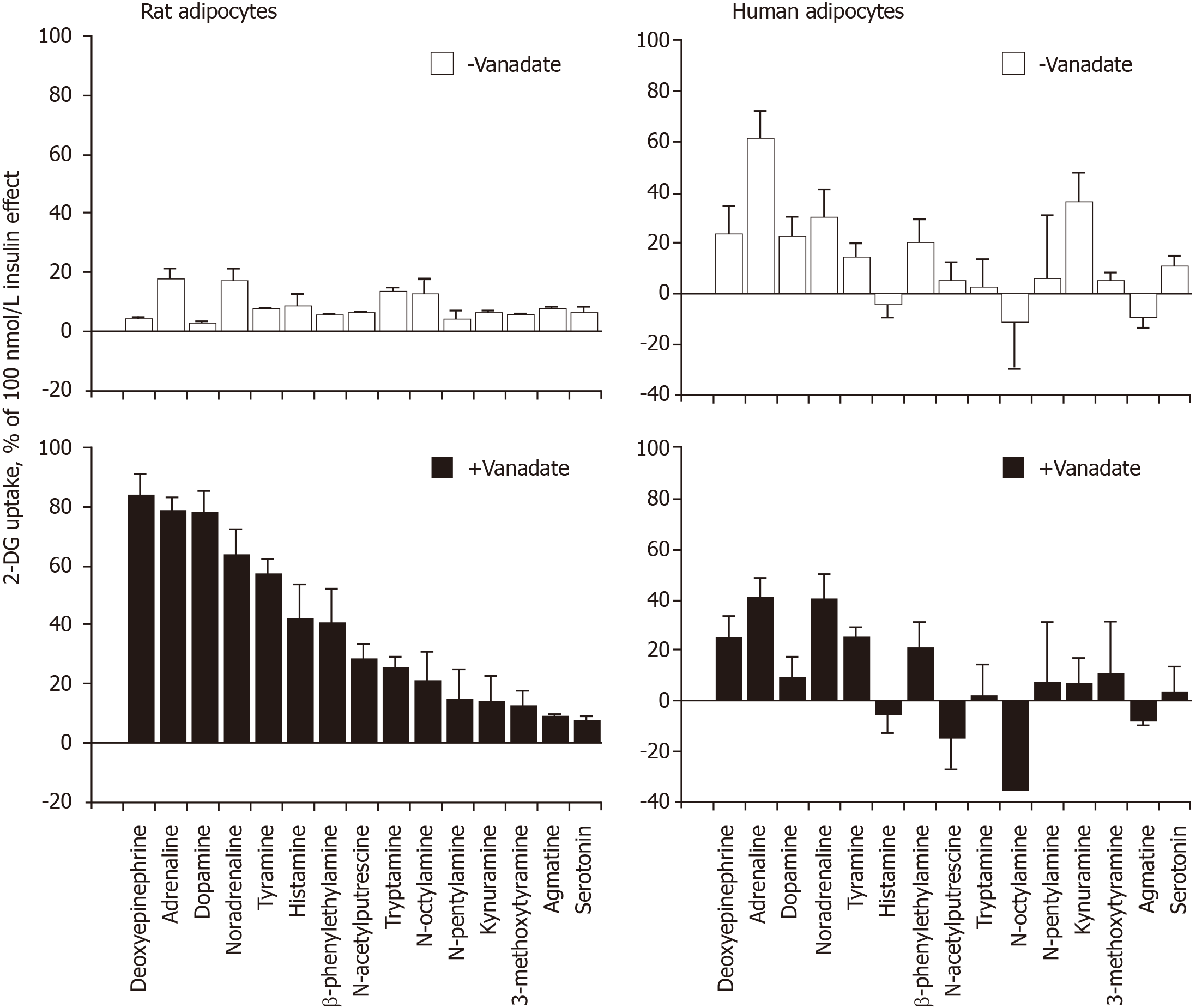Copyright
©The Author(s) 2022.
World J Diabetes. Jan 15, 2022; 13(1): 37-53
Published online Jan 15, 2022. doi: 10.4239/wjd.v13.i1.37
Published online Jan 15, 2022. doi: 10.4239/wjd.v13.i1.37
Figure 2 Interspecific differences between rat and human adipocytes in hexose uptake activation by various amines with and without vanadium.
Rat (left) or human (right) fat cells were incubated with 1 mmol/L of the indicated amines in the absence (upper panels, open columns) or the presence of 0.1 mmol/L sodium orthovanadate (lower panels, black columns) just before 2-deoxyglucose uptake assays. Hexose uptake was expressed as the percentage of maximal stimulation induced by 100 nmol/L insulin (set at 100%, with basal uptake set at 0). Negative percentages traduced a transport that was lower than baseline. Each column is the mean ± standard error of the mean of 4 to 11 experiments in rat adipocytes and of 3 to 12 preparations of human adipocytes and is presented according to the decreasing rank order of amine-induced stimulation obtained in rat adipocytes when tested at 1 mmol/L + 0.1 mmol/L vanadate, according to our previously published data[1], redrawn here in the left panel with the author’s permission. 2-DG: 2-Deoxyglucose.
- Citation: Carpéné C, Boulet N, Grolleau JL, Morin N. High doses of catecholamines activate glucose transport in human adipocytes independently from adrenoceptor stimulation or vanadium addition. World J Diabetes 2022; 13(1): 37-53
- URL: https://www.wjgnet.com/1948-9358/full/v13/i1/37.htm
- DOI: https://dx.doi.org/10.4239/wjd.v13.i1.37









